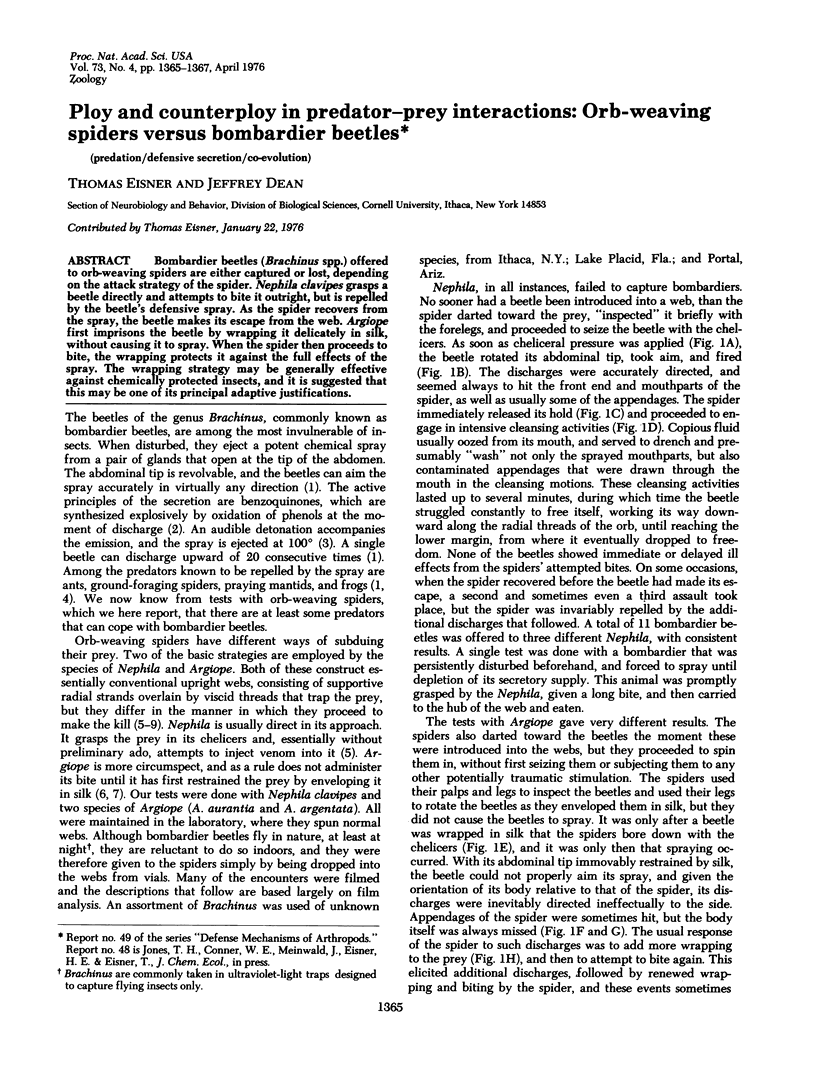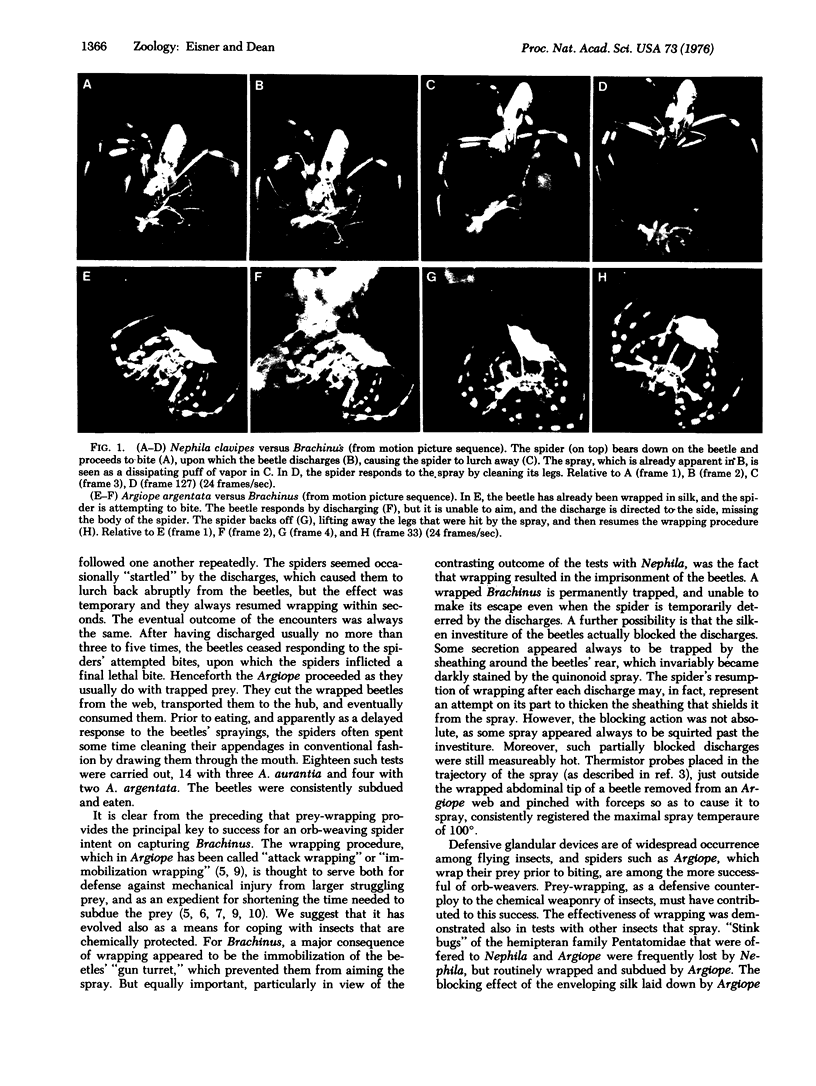Abstract
Bombardier beetles (Brachinus spp.) offered to orb-weaving spiders are either captured or lost, depending on the attack strategy of the spider. Nephila clavipes grasps a beetle directly and attempts to bite it outright, but is repelled by the beetle's defensive spray. As the spider recovers from the spray, the beetle makes its escape from the web. Argiope first imprisons the beetle by wrapping it delicately in silk, without causing it to spray. When the spider then proceeds to bite, the wrapping protects it against the full effects of the spray. The wrapping strategy may be generally effective against chemically protected insects, and it is suggested that this may be one of its principal adaptive justifications.
Keywords: predation, defensive secretion, co-evolution
Full text
PDF


Images in this article
Selected References
These references are in PubMed. This may not be the complete list of references from this article.
- Aneshansley D. J., Eisner T., Widom J. M., Widom B. Biochemistry at 100{degrees}C: Explosive Secretory Discharge of Bombardier Beetles (Brachinus). Science. 1969 Jul 4;165(3888):61–63. doi: 10.1126/science.165.3888.61. [DOI] [PubMed] [Google Scholar]
- Eisner T., Meinwald J. Defensive secretions of arthropods. Science. 1966 Sep 16;153(3742):1341–1350. doi: 10.1126/science.153.3742.1341. [DOI] [PubMed] [Google Scholar]



